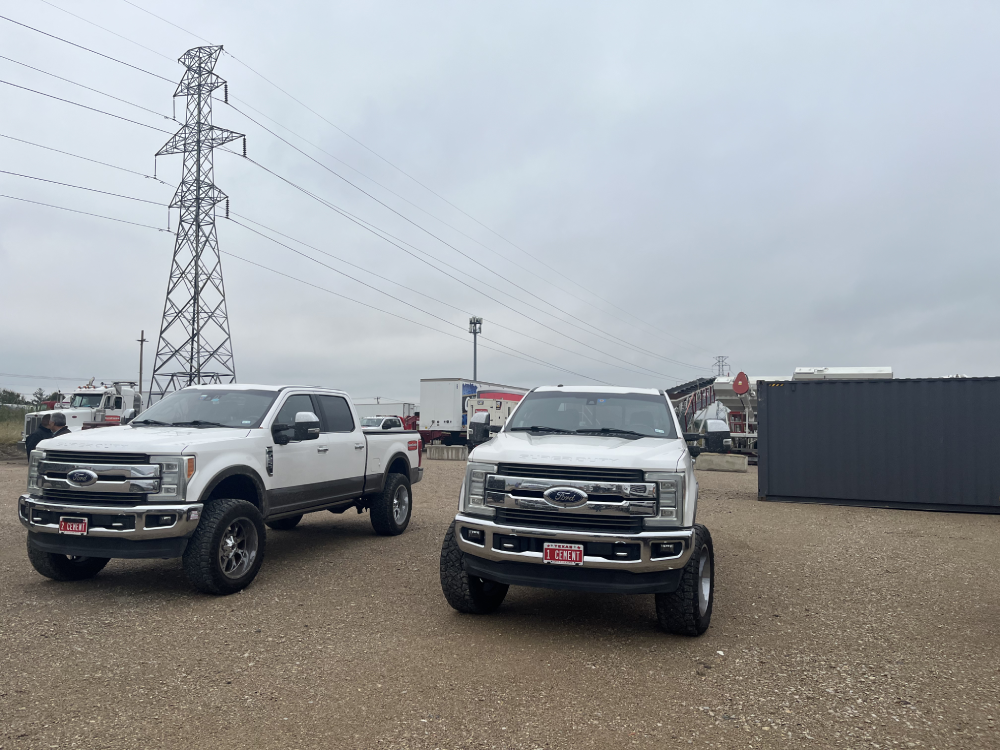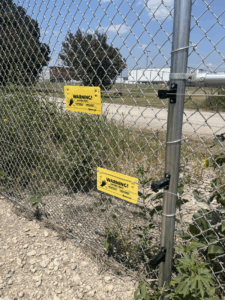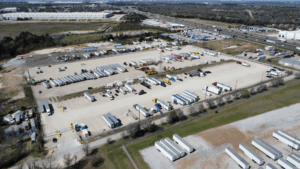Truck and trailer parking has ended up as one of the biggest challenges in the logistics industry. According to the American Transportation Research Institute (ATRI), parking is among the top five critical issues that are faced by commercial drivers, with over 75% of drivers reporting difficulty in finding safe parking during their Hours of Service (HOS) limits.
This shortage is very much there in urban and high-traffic freight corridors, where limited infrastructure and local zoning laws also restrict access.
There is a huge demand for secure, long-term, and overnight truck and trailer parking as the number of registered commercial vehicles increases annually.
The U.S. Department of Transportation records that there are over 3.5 million professional truck drivers, but only 313,000 public parking spaces across the nation. This creates a big imbalance between supply and demand.
For commercial operators, fleet managers, and independent drivers, it is important to know how to locate reliable parking and when to plan ahead is important for compliance and safety.
This guide tells you about every aspect of the process: why parking is limited, what options exist, how to secure a spot, and what to consider when looking for locations. It also outlines the latest digital tools and industry best practices to simplify the search for truck and trailer parking near me or anywhere across the country.
Why Is Truck and Trailer Parking So Hard to Find?
The demand for parking is more than the space available across most of North America. This problem comes because of regulatory, geographic, and economic factors that have created a shortage in areas near major freight corridors.
1. Insufficient Parking Supply
According to the U.S. Department of Transportation, there are only approx 313,000 truck parking spaces nationwide, while the number of active trucks on the road goes above 1.9 million. This creates a severe gap between demand and supply, leaving drivers with limited or no choices. Especially during peak traffic hours or near urban delivery zones.
2. Zoning Restrictions and Local Bans
Many municipalities have enacted strict zoning laws that either limit or prohibit overnight parking for commercial vehicles. In residential and mixed-use zones, parking a trailer or semi-truck is usually illegal. This forces drivers to look for space away from delivery sites or resort to unsafe roadside options.
3. Lack of New Infrastructure
New truck parking facilities are rarely built quickly that matches freight growth. The land near a major highway is costly and usually prioritized for industrial or retail development. Without incentives or federal funding, private parking operators have very little motivation to expand their lots, especially if it is for long-term truck and trailer parking.
4. High Utilization of Truck Stops
Major truck stop chains like Love’s, Pilot, and TA report over 90% occupancy rates during nighttime hours. Many locations fill up by early evening. This leaves drivers unable to follow HOS rules unless they’ve secured parking in advance. Googling “truck and trailer parking near me” late in the day usually provides fewer results in areas with high demand.
5. Growth in E-commerce and Regional Freight
The rise of e-commerce has increased the regional and last-mile freight. This has placed more strain on parking near urban centers, where space is scarce and delivery windows are tight. More trucks on the road mean more competition for limited parking.
Related: How to Store My Truck: Safe, Spacious & Convenient Parking Solutions
What Are Your Truck Parking Options?
Operators searching for truck and trailer parking today have more options than ever before, but availability changes based on location, time of day, and vehicle size. Choosing the right parking solution depends on factors like trip length, delivery schedule, cargo value, and budget. Below are the most common and reliable truck parking options available in North America.
#1 Truck Stops
National chains such as Pilot Flying J, Love’s, and TA Petro run thousands of locations for truck and trailer parking. They also have facilities like fueling stations, restrooms, showers, and food options.
- Their availability is high during midday. Low during overnight hours.
- The security is different according to location. Some sites offer surveillance and gated access.
- It is best for short-term stops, rest breaks, and following HOS.
#2 Highway Rest Areas
Public rest areas run by state departments of transportation offer free parking for commercial vehicles. Most include basic amenities like restrooms, vending machines, and picnic areas.
- They are mostly limited, and get filled by evening in high-traffic regions.
- The security includes minimal surveillance, which is also not always monitored.
- It is suitable for quick breaks or mandatory rest periods.
#3 Dedicated Truck Parking Lots
Private companies have lots specifically designed for truck and trailer parking. Most of them are near industrial zones, intermodal yards, or major highways. You can reserve them online or through parking apps.
- The availability is more consistent with advance booking.
- The security includes fencing, lighting, cameras, and on-site staff.
- It is best for overnight, multi-day, or long-term trailer storage.
#4 Commercial & Industrial Property Rentals
Some businesses with excess yard space offer truck and trailer parking near freight corridors. These may be listed through digital marketplaces or arranged directly with property managers.
- The availability differs as often it is used for monthly parking or trailer drop-and-hook operations.
- The security is solely dependent on the property owner. Verification is advised.
- It is useful for operators with regular routes near specific metro areas.
#5 Trailer Drop Yards
Drop yards are locations where trailers can be unhooked and stored safely while the tractor is in use elsewhere. These are commonly used by carriers, third-party logistics providers (3PLs), and freight brokers.
- They are usually reserved in advance through contracts.
- It usually has access control and surveillance.
- Ideal for managing trailer pools, relay loads, or reducing last-mile congestion.
#6 Reserved Parking Through Digital Platforms
There are a lot of apps now that help drivers to book truck and trailer parking near me in advance, eliminating the risk of late-night spot hunting. Platforms like Trucker Path, Truck Parking Club, and Park My Truck will show you available lots, including private yards and truck stops.
- You can get real-time updates and booking capabilities.
- The security is according to the listings that include all the details.
- It is useful for pre-planned routes or avoiding peak-hour shortages.
Related: Truck Parking Lots vs. Truck Stops: Which is Better for Long-Term Parking?
How to Find Truck and Trailer Parking Near You
Truck and trailer parking has to be treated like part of the route, not something to figure out once the hours run low. Most of the major corridors don’t have enough space to meet demand, and the areas that do fill quickly. The key is knowing where to look and how to book.
1. Check Dedicated Parking Website and Apps
There are apps built for commercial drivers that offer the fastest way to see what is available. Dallas Truck Parking, Trucker Path, Truck Parking Club, and Park My Truck list locations with truck-compatible space, hours, rates, and security details. Many let you reserve in advance, which is the safest option in busy regions. The data is updated usually by drivers using the app, so it is more reliable than a basic map search.
2. Use Google Strategically
Search with specifics. Typing “truck and trailer parking near me” or “semi parking near me” usually pulls up truck parking space, truck stops, drop yards, and local lots that accept commercial vehicles. Look for keywords like 24/7 access, gated entry, or trailer drop. Always check street view and call before arriving, especially in tight city zones.
3. Call Ahead
Some yards and truck stops don’t post online, or their listings are outdated. A five-minute call to confirm space can save hours of driving around. For paid lots, ask if overnight stays are allowed and what’s included. Some charge extra for trailer drop or outside hours access.
4. Dispatch Support
Drivers working under a carrier or broker should check with dispatch before searching on their own. Many carriers have yard agreements or recurring spots near warehouses. If no space is reserved, dispatch can often recommend a vetted location close to the route or drop-off point.
5. Use Onboard Fleet Tools
Most trucks running ELDs or dispatch software now receive alerts for HOS compliance and nearby parking. These tools use GPS and route timing to recommend legal stops based on remaining drive time and traffic. It reduces the chance of last-minute violations or illegal roadside parking.
6. Driver-to-Driver Info
Forums and private groups often share parking details not listed anywhere else. Local drivers know which lots are safe, which fill early, and where security is tight. For new routes or unfamiliar cities, this can be the fattest way to get reliable information that apps miss.
Related: How to Book 18-Wheeler Parking Spaces for Rent in Dallas
Final Thoughts
Truck and trailer parking isn’t a convenience, it is an important part of staying compliant, on schedule, and secure. As demand outpaces available space, especially near freight corridors and metro areas, the ability to plan ahead makes a measurable difference.
Drivers and fleet operators who treat parking as part of the route, factoring in location, legality, cost, and safety, cut down on violations, wasted fuel, and cargo risk. The tools exist. Use them early.
Every stop should be intentional. That’s how the job stays on track.






